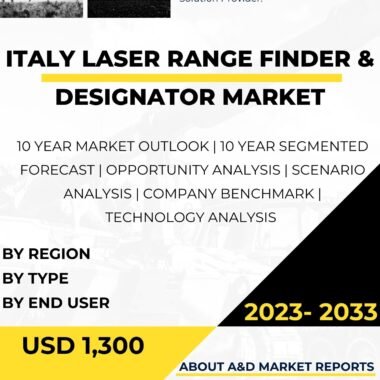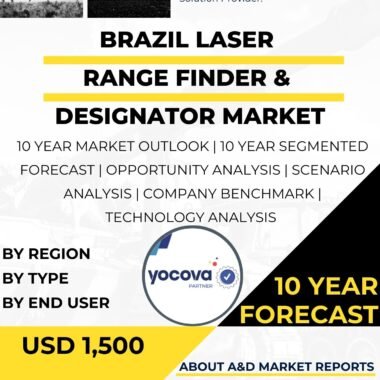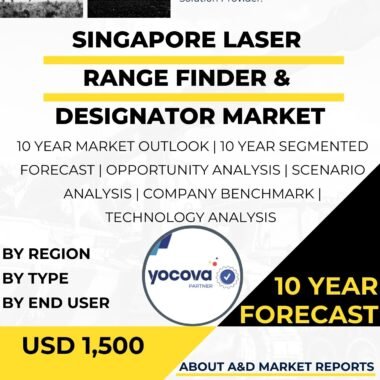Description
The market for 155mm artillery shells in Brazil is shaped by the country?s ongoing defense modernization efforts and its strategic goals to enhance military capabilities. Brazil has been investing in upgrading its artillery systems, which includes the procurement of 155mm caliber howitzers and an emphasis on developing the domestic production capacity for these munitions. This artillery caliber, noted for its balance between range, firepower, and versatility, is widely adopted globally in modern field artillery, making it a key component for Brazil?s artillery forces.
A significant driver of growth in the Brazilian 155mm artillery shell market is the nation?s push toward self-reliance in defense manufacturing. Brazil?s military modernization initiatives incorporate technology transfer and local production mandates in procurement contracts, aiming to establish a sustainable production ecosystem within the country for 155mm shells. This effort is crucial to reduce dependence on foreign suppliers, enhance supply chain security, and ensure logistical efficiency during military operations. The establishment of local manufacturing lines also allows Brazil to tailor munition variants to specific operational requirements based on terrain and threat environment.
The demand for 155mm artillery shells in Brazil is fueled primarily by the army?s artillery modernization programs that seek to replace legacy systems with newer, more capable howitzers compatible with NATO-standard ammunition. This standardization allows compatibility with a broader array of advanced munitions, including precision-guided shells, illumination, smoke, and various high-explosive types tailored for different tactical scenarios. The adoption of advanced artillery shells enhances Brazil?s fire support range and accuracy, improving operational effectiveness in both conventional and asymmetric warfare contexts.
Brazil?s geographic size and security challenges play a role in shaping its 155mm artillery requirements. The need for reliable artillery support spans various operational theaters?from border defense and internal security missions to potential peacekeeping deployments abroad. The Brazilian Army?s focus on territorial security and counter-insurgency operations drives demand for artillery systems capable of effective indirect fire support against dispersed and mobile threats in diverse environments including jungle and mountainous terrains.
The market is also influenced by regional dynamics where Brazil plays a strategic role within South America. While the Latin American region is not a major global market for 155mm artillery shells compared to other continents, Brazil remains a key player within this segment due to its sizeable defense budget and regional ambitions. The country?s acquisitions and domestic production efforts contribute to a baseline demand that supports local defense contractors and suppliers specialized in artillery ammunition manufacturing.
Brazilian defense manufacturers benefit from skilled labor pools and government policies that encourage investment in defense production clusters, particularly in areas with established industrial bases. The proximity of these clusters to major ports enhances Brazil?s export capability, potentially allowing surplus production to serve regional markets in Latin America and beyond. Export opportunities complement domestic demand and help stabilize production lines, mitigating the cyclicality of national defense budgets.
Competition within Brazil?s 155mm artillery shell market is characterized by a moderate concentration of players that include state-owned enterprises and private manufacturers with experience in ammunition production. The competitive landscape encourages technology upgrades and cost efficiencies while adhering to stringent quality control and traceability mandates essential for military-grade ammunition. Established producers leverage economies of scale and strong relationships with the Brazilian Armed Forces to secure long-term contracts and maintain production continuity.
Technological advancements within the 155mm artillery shell segment are a notable factor influencing market trends in Brazil. Innovations focus on improving range, precision, lethality, and adaptability of the shells to networked warfare environments. The integration of smart guidance systems and modular ammunition designs that can be customized for different missions is increasingly important. Brazil?s efforts in technology transfer and collaboration with foreign defense partners facilitate access to these advanced capabilities, helping to maintain the relevance and performance of its artillery units.
Environmental and regulatory considerations also shape manufacturing practices for 155mm artillery shells in Brazil. Compliance with environmental policies and safety standards requires investment in cleaner production technologies and handling processes for propellants and explosives. These factors contribute to the complexity and cost structure of the local artillery ammunition industry but also promote modernization and responsible production practices.
The overarching outlook for Brazil?s 155mm artillery shell market is one of gradual growth supported by continuous modernization programs, strategic self-sufficiency initiatives, and regional security imperatives. Although constrained by factors such as budgetary priorities and international competition, Brazil?s commitment to upgrading its artillery capabilities and developing domestic production capacity suggests ongoing stable demand. This demand is balanced by the country?s ambitions to act not only as a consumer but also as a regional supplier in Latin America, potentially expanding its role in the broader regional defense industrial base.
In summary, Brazil?s 155mm artillery shell market is underpinned by its national defense policies focused on modernization and self-reliance, characterized by a strong emphasis on domestic production capability and technology transfer. The market reflects Brazil?s strategic need to equip its forces with advanced, versatile artillery ammunition while fostering indigenous manufacturing that supports both domestic and regional defense requirements. Technological evolution and regulatory frameworks continue to influence market dynamics, driving improvements in the design, precision, and production processes of 155mm artillery shells used by the Brazilian military. This consolidates Brazil?s position as a significant, though not dominant, player in the Latin American 155mm artillery shell market landscape.




